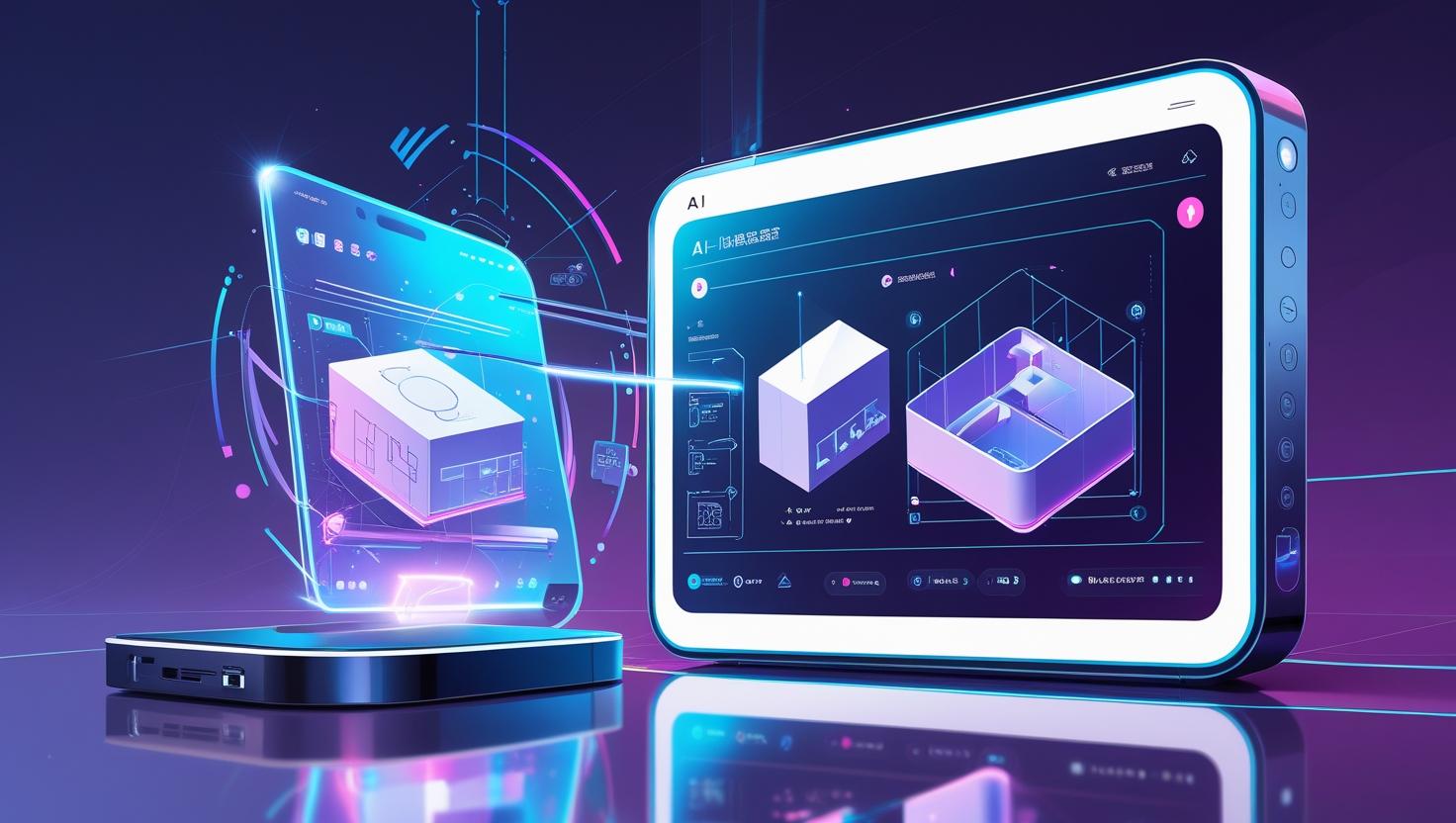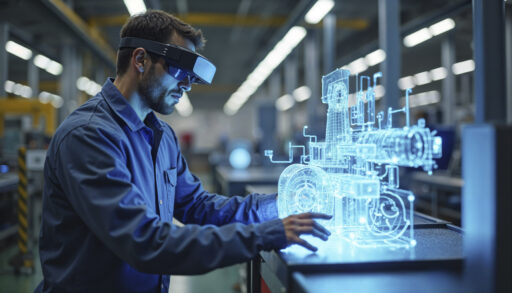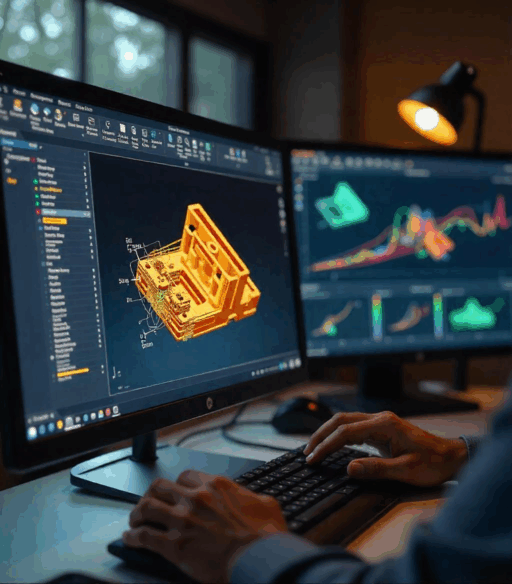In today’s competitive market, the pressure to innovate faster and smarter is greater than ever. Product design is no longer just about how things look; it’s about how efficiently they are made, how well they function, and how quickly they adapt to user needs. And that’s exactly where AI in product design is creating a buzz. Artificial Intelligence is not just transforming digital spaces; it’s reshaping how we imagine, design, and build physical products. From concept generation to final detailing, AI is becoming the designer’s most trusted assistant; fast, precise, and constantly learning.
What is AI in Industrial Product Design?
So, what does AI in industrial product design really mean? It’s about using machine learning, generative algorithms, and data analytics to help designers create better products. These AI tools for designers can process large sets of data, learn from them, and come up with design solutions that even experienced professionals might overlook.
In product development, artificial intelligence is helping teams reduce trial and error. It offers suggestions based on user data, past performance, and material behavior. It doesn’t replace human creativity; it enhances it with smarter insights.
Increased Productivity with AI-Powered CAD Software
If you’ve used design software before, you know how time-consuming even small changes can be. But with AI CAD software, that’s changing. Tools equipped with predictive Modelling can anticipate the user’s design intent, provide real-time feedback, and reduce manual adjustments.
Software like Fusion 360 uses automated product design techniques and CAD artificial intelligence to improve workflows. Features like auto-correction can fix common modeling issues on the go, saving hours of rework. In short, AI in CAD helps designers do more in less time; with better accuracy.
Predictive Design and Simulation:
One of the most impactful uses of AI is in design and simulation. Traditionally, simulation required detailed inputs and hours of processing. But artificial intelligence simulation software can now provide quick, accurate feedback on product behavior under different conditions.
By integrating AI into simulation tools, engineers can optimize product life cycles, test durability, and identify flaws early in the design phase. This not only reduces costs but ensures products are safer and more reliable when they hit the market.
Generative Design: Creating Smarter Products:
AI generative design is like brainstorming with a supercomputer. You set goals like reducing weight or using less material; and the AI creates hundreds of options that meet those goals. The result? Innovative, lightweight designs that would be hard to imagine manually.
This technology is especially useful in industries like aerospace or automotive, where every gram matters. Generative design not only improves functionality but also helps companies hit sustainability goals by reducing material waste.
Career Opportunities in AI-Powered Product Design
As AI becomes deeply embedded in design processes, it’s opening up exciting roles. From working in smart manufacturing setups to developing AI CAD designs, there’s a growing demand for engineers who understand both design and technology.
Students enrolling in an AI product design course can expect opportunities in automotive, consumer electronics, robotics, and even wearable tech industries. If you’re curious about how AI in engineering design works, now’s the time to upgrade your skills and explore this evolving field.
Role of Vizcom.AI & Fusion 360 in Industrial Product Design:
Two tools making a huge impact in industrial product design are Vizcom.AI and Fusion 360. Vizcom.AI allows designers to bring sketches to life using AI modeling tools, generating high-quality visuals instantly. It’s like having a 3D artist in your pocket.
Meanwhile, Fusion 360 is packed with AI design tools that support everything from real-time simulations to modeling 3D models using AI. These tools are helping designers iterate faster, collaborate better, and make informed decisions; all within one platform.
Real-World Applications of AI in Industrial Design:
AI is not a futuristic idea, it’s already in action. In automotive design, AI helps craft safer, more efficient vehicles. In aerospace engineering, it aids in building lighter components that can withstand extreme conditions.
Even day-to-day product design software now uses AI to suggest design tweaks, highlight performance issues, and offer material recommendations. From home appliances to complex machines, AI is quietly powering better, smarter products around us.
Conclusion:
The rise of AI in design and manufacturing isn’t just a trend, it’s a transformation. Whether you’re a student or a working professional, knowing how to use AI tools for product design gives you an edge. As more industries adopt product design AI tools, the demand for talent who can combine creativity with AI knowledge is only going to grow.
If you’re excited about this new era of design and want to explore how AI can shape your future, check out our AI Powerup Program at CADD Centre. Whether it’s the Certificate in AI-Powered Smart Product Design, we’re here to help you build the skills that matter. For more details, feel free to visit our website – caddcentre.com.
FAQs
How is AI different from traditional CAD software in product design?
AI-enhanced CAD software uses predictive algorithms and automation, whereas traditional CAD relies heavily on manual input. AI tools can suggest design improvements, reduce errors, and adapt to changes faster than conventional methods.
How is AI transforming the product design process?
AI enhances every phase of product design—from idea generation to final detailing—by offering real-time insights, predictive modeling, and intelligent design suggestions. This reduces trial and error, accelerates development, and improves end-product quality.
What skills do I need to work with AI in product design?
You’ll benefit from skills in CAD software, basic machine learning concepts, design thinking, and data interpretation. Courses like those offered at CADD Centre can help bridge the gap between design and AI tech
What career opportunities are available in AI-powered product design?
Professionals skilled in AI and product design can explore roles in smart manufacturing, robotics, wearable tech, automotive design, and more. The demand for engineers who understand AI-integrated design tools is growing rapidly.
Why should I choose CADD Centre to learn AI in product design?
CADD Centre offers industry-relevant training, certified courses, expert instructors, and hands-on practice with real-world tools like Fusion 360 and Vizcom.AI. Their programs are tailored to help learners build job-ready AI design skills.
What are the benefits of using AI in CAD software?
AI-enabled CAD software boosts productivity by predicting design intent, offering auto-corrections, and reducing repetitive manual tasks. It helps designers save time, minimize errors, and achieve higher design precision.





